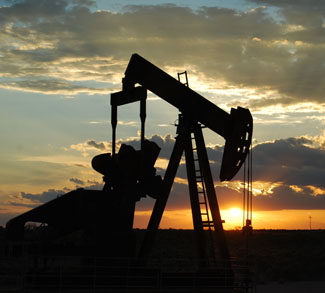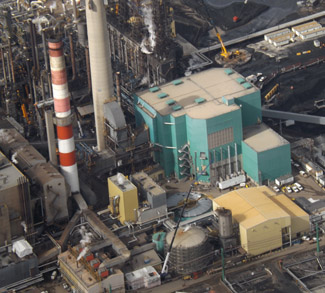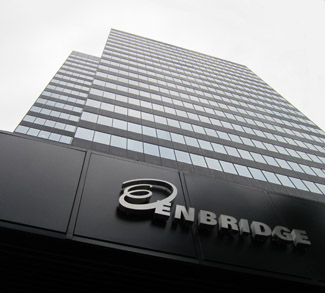The Vilification of Oil
As a Canadian I have witnessed firsthand the vilification of Canada’s oil sands. Canadians concerned with the effect oil sands have on the world likely led to a shift of Canada’s federal and Alberta’s provincial governments from ones that did not actively address climate change to ones that ran on a platform of reducing greenhouse gas (GHG) emissions.
Canada’s oil sands focus primarily on oil production (excluding the Syncrude Canada upgrading project) and are responsible for less than 20% of GHG emission from the oil well to its use in cars (combustion). In fact, around the world, oil production accounts for less than 20% of GHG emission from well to combustion.

Canada’s oil is refined in the US Midwest and Gulf Coast and mainly consumed or exported as refined products by the US (70%-80% of GHG emissions). Canadian environmentalist groups targeting to reduce GHG emissions have targeted the supply of GHG emission in Alberta instead of demand in the US that is responsible for most of the GHG emissions from the oil well to combustion.
Is Vilifying Oil Good or Bad?
The vilification of oil production is not just localized to Canada’s oil sands. California has pushed for a reduction of its GHG emissions and many environment groups in the US are concerned with hydraulic fracturing and natural gas flaring which disrupts the environment and releases GHG into the atmosphere. North America may be acting on certain GHG reducing policies, but the global oil sector has taken notice to this trend.
The pressure put on oil companies to reduce GHG emissions have forced them to accelerate in improving their environmental footprint by innovating the way they produce oil. Innovations in oil extraction and production are capital intensive and take years to reach commercial potential. As years have passed we are starting to notice the fruits of their labor as oil companies are finding successful ways to balance profitability for shareholders and sustainability for the environment.
Harnessing the Sun to Produce Oil
A current example of the balance of profits and sustainable oil extraction is happening in southwest Oman’s Amal heavy oil field. Oman oil production depends on enhanced oil recovery (EOR) techniques which extract additional oil from fields by injected gas, steam, and polymers into the ground and increasing the flow of oil. Around 22% of the 1 million barrels per day (b/d) of oil production in Oman uses EOR techniques.

The Amal field is unique to Oman’s EOR endeavors, as the Petroleum Development Oman (PDO) national oil company, a company that controls 70% of Oman’s total production, has pursued the use of the sun as a way to extract oil. This technology, owned and operated by GlassPoint Solar, had been used in the U.S. as early as 2011. GlassPoint’s technology uses solar thermal mirrors to concentrate the sun’s rays to heat water and generate steam.
Steam is an integral part of EOR as it is primarily pumped through an injector well, flooding the oil formation, heating the oil, reducing its viscosity, and pushing the oil towards an adjacent producer well. To create steam, oil companies use natural gas, liquefied natural gas (LNG), and/or diesel, as the fuel input to heat water and generate steam – generating significant GHG emissions. GlassPoint Solar is taking a different approach by using emissions-free solar thermal mirrors to concentrate the sun’s rays to heat pipelines carrying water and generate steam. GlassPoint uses a patented method that encloses solar thermal mirrors and aiming devices inside a glasshouse and protected the mirrors from humidity, wind, dust, and sand storms.
One of the first two solar EOR projects was conducted at Berry Petroleum’s 21Z lease in Kern County, California in February 2011 using GlassPoint’s patented enclosed solar thermal technology. The other technology used in 2011 was by BrightSource Energy, in Fresno, California, which reflected solar rays from its mirrors to a central solar receiver on top of a tower. The thermal energy from the tower receiver was used to heat a boiler filled with water to generate steam. While the BrightSource project was 100 times larger than GlassPoint’s project, GlassPoint’s enclosed technology was able to withstand higher winds, produce relatively more steam, and had lower maintenance costs with an automated cleaning system.

What lead to setbacks in solar EOR projects in California was the market for fuel substitutes. Natural gas was a much cheaper source of energy in the US because of the shale boom. GlassPoint had identified that issue early on and targeted a new market that was paying a premium for natural gas to fuel its EOR operations: Oman.

Oman is in between the premium markets of Europe and Asia as a net exporter of natural gas through its 500 billion cubic feet (bcf) per year of LNG capacity. Oman exported 375 bcf of natural gas through its LNG export facilities near the Gulf of Oman to Japan and South Korea (93% of exports) in 2014. Oman currently exports natural gas through its LNG terminals at between $9 and $6 per million British thermal units (MMBTU) to Asia. Rising domestic natural gas demand, which has tripled from 2004 – 2014 to 721 bcf per year, has pushed Oman’s LNG company to announce that it will divert its LNG exports from foreign markets to domestic consumption by 2024.
With a growing petrochemicals sector and an electricity sector that has more than doubled output from 11 billion kilowatt hours (kWh) in 2004 to 26 billion kWh in 2013, Oman is planning on diversifying its economy from exporting oil and natural gas. Oman’s petrochemicals and electricity sector will depend heavily on natural gas consumption to grow. With 22% of Oman’s 56% consumption of domestic natural gas production coming from EOR operations, solar EOR could free and divert significant natural gas resources to other sectors of Oman’s economy – helping diversification within Oman.
GlassPoint in Oman – From Pilot to Project
In early 2013 GlassPoint began and continues to produce steam from a 7 Megawatt (MW) solar EOR project in the Amal field, over 20 times larger than its Kern County project. Testing in Oman validated GlassPoint’s technology as the company established a breakeven equivalent natural gas price of $4.95 per MMBTU; making solar a competitive alternative to traditional fuels.

As GlassPoint has successfully established its Amal pilot, GlassPoint is looking to lower costs and increase operational efficiency with its larger Miraah project at the Amal field. The Miraah project will be 100 times larger than GlassPoint’s Amal pilot with 1 Gigawatt (GW) of thermal energy to produce steam by 2017.
GlassPoint in Oman – Opportunities and Issues
The Amal field in Oman is an open area that receives a lot of sun from September through May. The open area in Oman allows for the new Miraah project to take up 741 acres of land (equivalent to over 360 football fields) with 36 glasshouses that provide 1 GW of thermal energy. Once in full production, the 1 GW of energy is expected to produce around 37,800 b/d of steam for EOR operations in the Amal field.
Even though Oman has vast open space and a hot climate, the Amal pilot project in 2013 ran into some external issues. For one, the GlassPoint Amal pilot was starting up at the same time as oil production and would often encounter problems with securing water supply and deploying steam in the field. At peak sunlight and no cloud cover, the Amal project could produce over 500 b/d of steam but averaged 315 b/d of steam since operation in 2013. The heavy cloud cover in the summer months from the Khareef monsoon that passes into southern Oman meant peak daylight in Oman is hidden behind heavy cloud cover and reduces sun exposure to solar thermal mirrors.

The high cloud cover, sand storms, and constant dust fall in Oman reduces the amount of sun absorbed by GlassPoint’s solar mirrors. A 3% reduction in solar energy output occurs every day if GlassPoint’s glasshouses are not cleaned from dust fall; therefore, its automated cleaning system allows for efficient cleaning and optimized sun absorption by solar mirrors. By understanding Oman’s weather patterns, another potential solar EOR project for GlassPoint enclosed technology has been identified in the less cloud cover, but windy and sand storm ridden heavy oil fields in North and West Kuwait.

Kuwait, a net importer of natural gas, will rely on EOR oil production to maintain 500,000 b/d of oil in western Kuwait, but the country hopes to reduce its dependence on importing LNG for EOR operations. Kuwait currently imports LNG cargos at $9 per MMBTU and the country will need more natural gas for the expansion and diversification of Kuwait’s petrochemicals, electricity, and water desalination industries.
The future of solar EOR is still in its early phase to the markets of the Middle East, but the unique natural gas market, vast land, and constant sunlight provides a great foundation for solar thermal EOR to flourish and establish sustainable future oil production. Oil companies and countries are constantly looking to reduce dependence on non-renewable inputs. While companies in the Middle East attempt to replace natural gas, LNG, and diesel with solar, another scarce and vital resource will need to be addressed with growing EOR operations: water.
Heating Oil: Riding the Radio Wave
Back in Canada’s oil sands, companies in Alberta share similar concerns with the Middle East over water usage. The two main forms of oil sands extraction is surface mining and underground in-situ EOR-like extraction – each form requires large quantities of water. According to the Canadian Association of Petroleum Producers (CAPP), mining oil requires an average of 3 barrels of water per barrel of oil extracted and in-situ operations requires an average of 0.4 barrels of water per barrel of oil. Concerns over water usage in Canada’s oil sands has forced more oil production to be extracted through in-situ processes that use less water and have a smaller land surface footprint.

While many of Canada’s new oil sands projects coming online are in-situ projects, water has still become a concern for conservation for companies who need to secure future water supplies. Many major oil companies control the largest in-situ projects in Canada’s oil sands and the leader of Canada’s oil sands, Suncor Energy (SU), is attempting to change its reliance on water.

Suncor has established the second phase of its Enhanced Solvent Extraction Incorporating Electromagnetic Heating (ESEIEH) pilot at Suncor’s Dover site in the first half of 2015. The ESEIEH pilot is a joint project between Suncor, Nexen Energy, Devon Energy (DVN), Harris Corporation (HRS), and Alberta Climate Change and Emissions Management Corporation (CCEMC).
The ESEIEH project uses two horizontal well pairings with Harris Corporation’s patented heat wave antenna inserted into the upper injector well and transmits low frequency energy to heat bitumen. Solvent (butane and propane) is heated and vaporized at 70 °C, requiring much less energy than to heat water at 200 °C to turn to steam. The vaporized solvent passes through the horizontal injector well, liquefies, diffuses into the bitumen, decreases its viscosity, and allows the oil to pump back up the lower horizontal production well.
The ESEIEH technology is expected to reduce energy usage by 75% and land usage by 30% from traditional steam EOR and would eliminate Suncor’s need for water, water treatment, and water handling infrastructure. If the project is deemed commercially viable after its second phase in the first half of 2017, the next phase will lead towards a commercial ESEIEH project. This technology has much needed potential in the Middle East with rising dependence on EOR oil production and an isolation from water needed to produce steam for thermal oil recovery.
Vilifying Oil is Good for Business
The vilification of oil is bad for perception but good for business for the largest oil companies. Oil companies would enjoy the sustainable opportunity to sell a finite resource like oil using an infinite renewable source of energy. The incorporation of renewable energy and alternative innovative methods of oil extraction is pushing oil production in the right direction – a push that has been accelerated by environmental interests. Solar thermal EOR and the use of radio waves to heat oil is just the beginning of a changing oil industry with a focus on sustainable oil production and enhanced oil recovery.
The opinions, beliefs, and viewpoints expressed by the authors are theirs alone and don’t reflect any official position of Geopoliticalmonitor.com.




